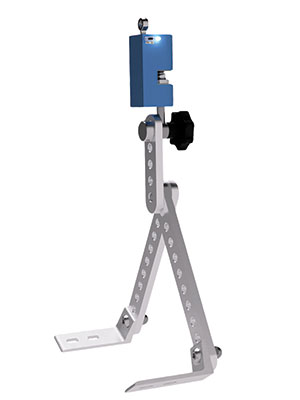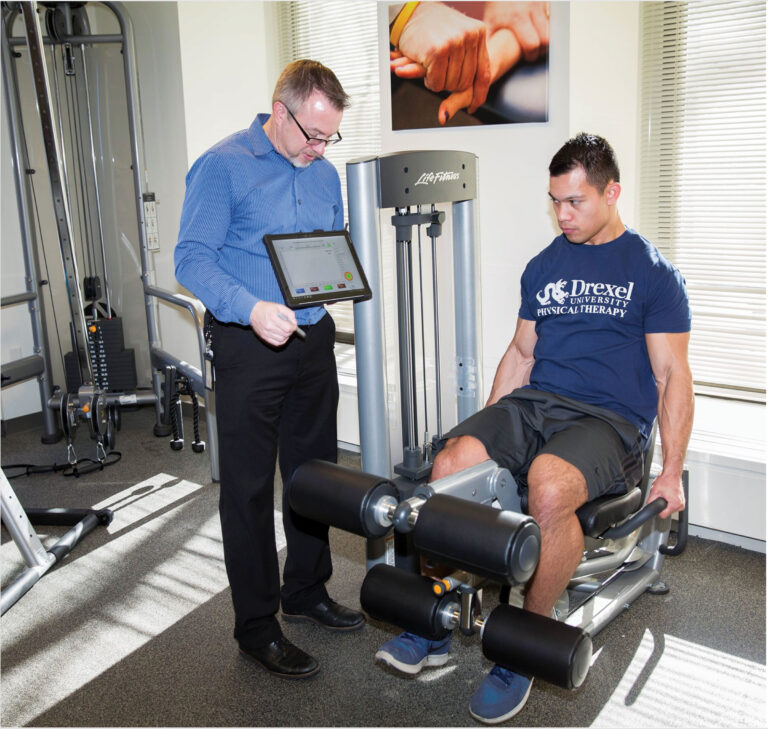
This Drexel-made dynamometer will be far less costly to produce than existing machines.
When Noel Goodstadt arrived at Drexel in 2008 and began working at Drexel Physical Therapy Services, he didn’t have access to an isokinetic strength-testing device, considered the gold standard for measuring the muscle force of patients’ knees and other joints. While the University does have one now, the devices are expensive, at around $45,000 each.
Goodstadt and some of his colleagues thought there had to be a better way. A device called a handheld dynamometer was being used in the field, but it has issues as well.
“With the handheld device you can’t tell if you’re measuring the therapist’s force on the person, or the person’s force on the therapist,” says Goodstadt, who serves Drexel as associate clinical professor of physical therapy and rehabilitation sciences and director of residency programs and human gross anatomy. That leads to unreliable readings, especially if the patient is stronger than the physical therapist.
So in 2014, Goodstadt formed a project team made up of five students from the School of Biomedical Engineering, Science and Health Systems, who came up with a prototype for a portable dynamometer. He then finetuned their prototype with colleagues Arun Ramakrishnan, director of research labs at the College of Nursing and Health Professions; Sheri Silfies, associate professor of exercise science at the University of South Carolina; and Sri Balasubramanian, associate professor at the School of Biomedical Engineering, Science and Health Systems. In August 2021, the device received patent No. 11099089.

The dynamometer pinpoints force exerted by a patient, providing a reliable measure of muscle strength.
Their invention is a one-foot-tall, portable, extendable machine that attaches to common gym weight equipment. “Through several design iterations, we were able to build a sleek, wireless, portable and adaptable device that performed comparably to the gold-standard isokinetic machine,” says Ramakrishnan.
Goodstadt believes it allows clinicians to get more reliable readings from their patients. “There are a high rate of subsequent injuries upon return to high-level sports post ACL reconstruction,” Goodstadt explains. “The expectation is that if we can get them stronger as one of the criteria, and not rush them back but focus on their movement dysfunctions, maybe we can actually lower the number of second ACL injuries.”
Their goal is to sell the device for between $1,500 and $2,500.
“Securing the patent is a big milestone in terms of commercialization,” Ramakrishnan says.
The process has involved Drexel at almost all steps along the way. The group received grants from the ExCITe Center and the Drexel Coulter Translational Research Partnership Program for product development and clinical testing. The device is currently being used at the Drexel Physical Therapy clinic, where they’re seeing “great results,” Goodstadt says.
“The whole process has been exciting,” he says. “Hopefully we can give therapists and potentially personal trainers and athletic trainers and sports performance specialists another option.”

Noel Goodstadt, inventor


